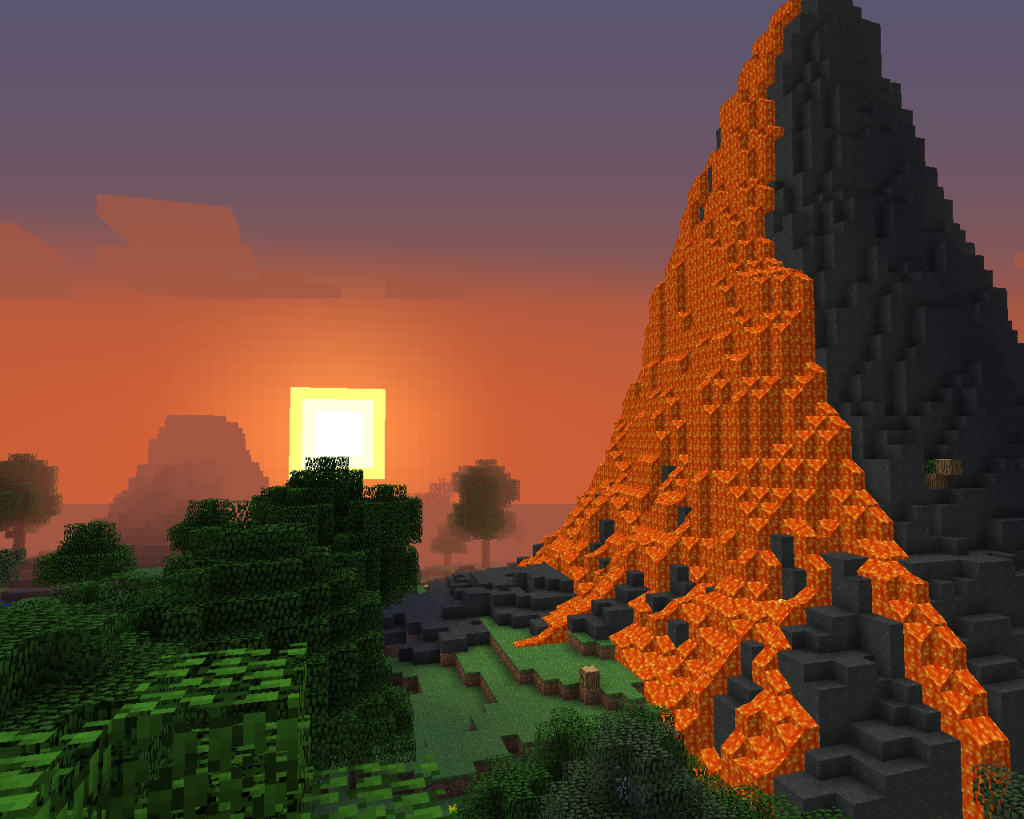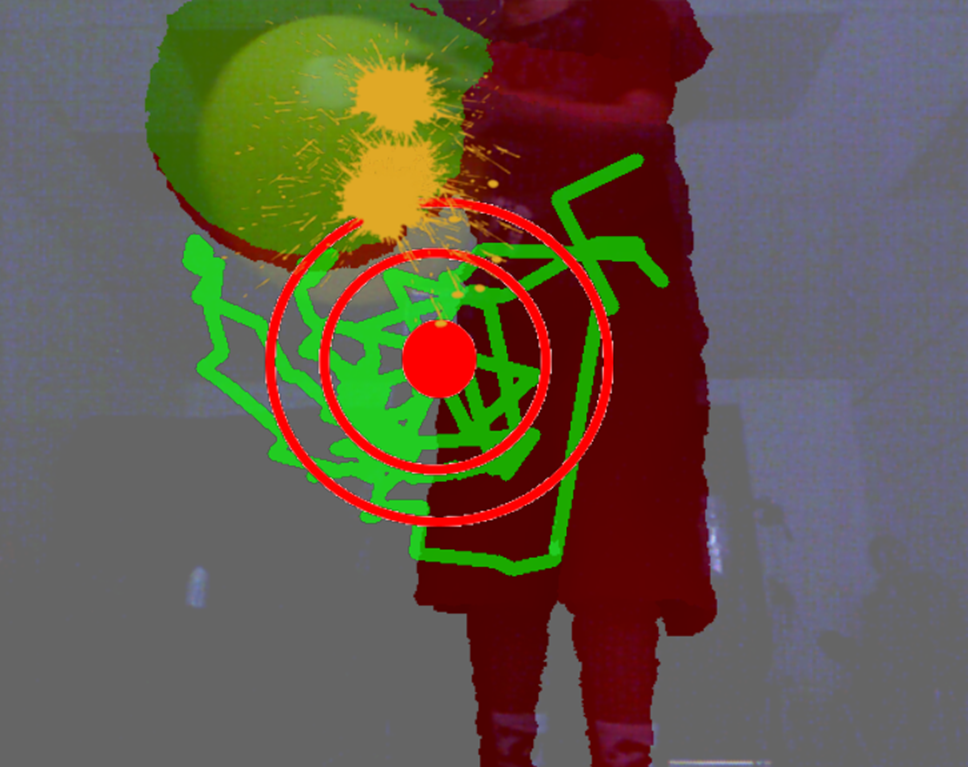Yeah, that’s me being completely ridiculous after a very long day of programming.
Tag: Autism Spectrum Disorder (Page 4 of 4)
My intention with these blog posts is to have a sort of informal record of my time spent in Autcraft. They will be my beginnings, in a way, of creating my overall narrative of my experience. I will be creating much more formal documentation in the form of conference papers and journal articles, but here I want to create a space that is more open to dialogue and discussion. I also want the community to know that I am completely open and willing to share my thoughts and findings as much as I want to hear the thoughts of those in the community. My hope is to be able to tell the story of Autcraft and to be able to, through technology, expand on what it has given the autism community if I can.
My first week in the Autcraft community has been an extremely humbling experience. As I made my first timid steps into the unknown, I was greeted with open arms. A good number of people have given me encouragement, offered to help, welcomed me and offered friendship, and thanked me. I feel like I should be the one thanking every single member of the Autcraft community for allowing me to be among them.
I feel like I have accomplished a lot in the few hours I have played over the last week: I’ve built a modest office, explored many different areas, gone mining, died in lava, played Hide and Seek with other players, marveled at all the amazing things other players have built, played Paint Ball with other players, and died falling from a giant pink pony. All and all, a very busy, but successful week.
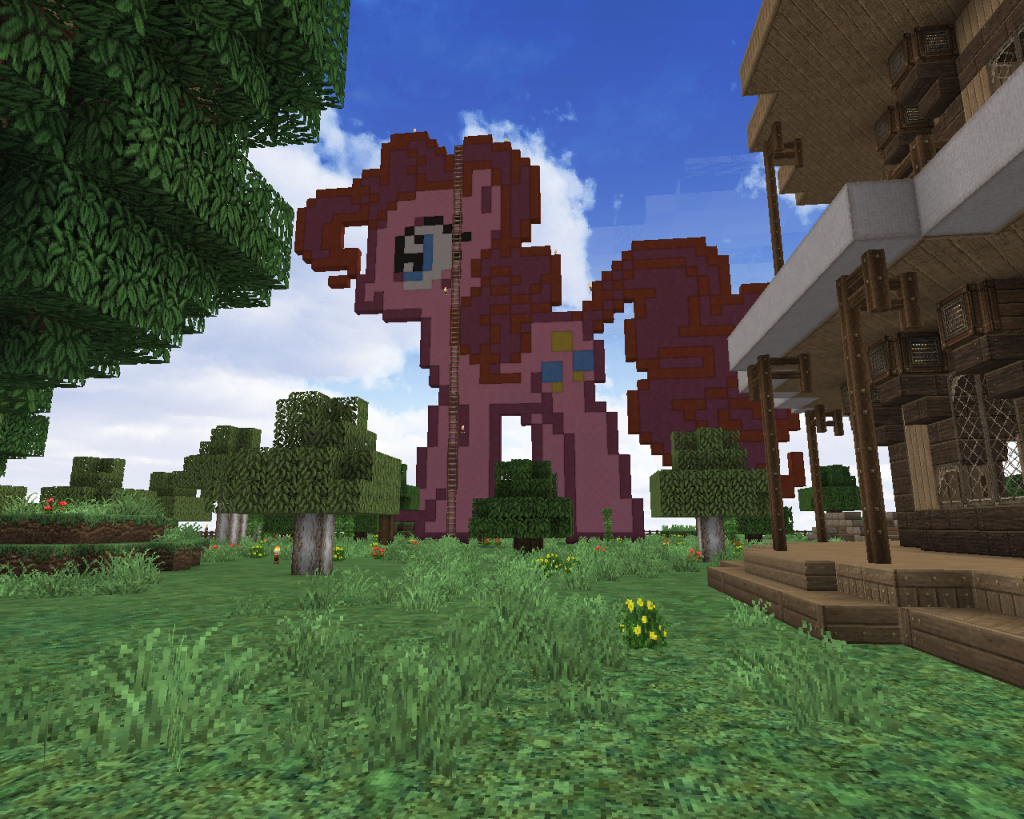
Fell off from the top of a giant pink pony and died. Admittedly a first for me.
I have been struck by the many different ways in which players communicate in Autcraft. There is text chat, but there is so much more. Players also communicate via their characters (how they look and through their movements), via their constructions, via signs littered throughout the world, and more. I am sure those that have a limited understanding of autism would be very surprised to hear that these players are communicating at all. And while I am still in the very early stages of my research, I can assure anyone reading this that these players are communicating- in a varied and rich format.
I will close with that for this week. Please stay tuned and feel free to email me at kringlan [at] uci [dot] edu with any questions about my work. Thanks and keep on building!
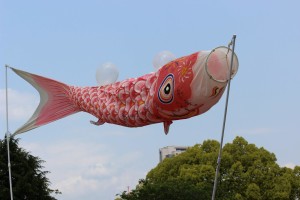
At the Hiroshima Flower Festival 2013. Photo Credit: Severn Ringland.
In the fall of 2013, I applied for the NSF’s East Asia Summer Institute Program and was accepted February 3, 2014. The abstract to my proposal:
While there are a variety of available Augmentative and Alternative Communication (AAC) devices available for individuals with Autism Spectrum Disorder in the United States, these devices are infrequently found for users in Japan especially in their native language. A culturally appropriate AAC system for use with Japanese children will be designed using participatory design workshops with stakeholders from Hiroshima University. During this project she will come to better understand the process of designing assistive technology as it occurs between local stakeholders in Japan and American researchers and to create a framework to help facilitate this kind of work in the future.
Click here for a full version of my proposal.
Last Updated: April 3, 2014
Related Posts:
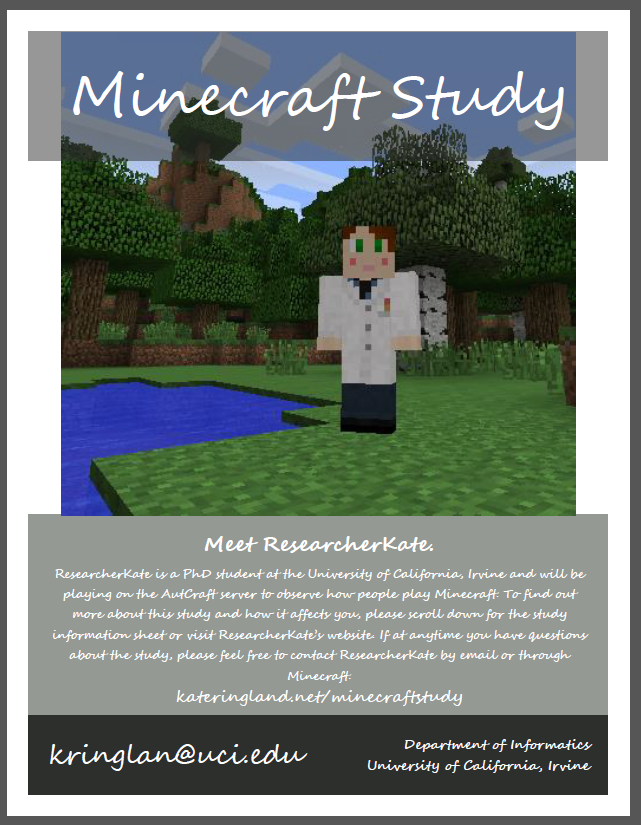
My name is KateRingland and I am a PhD student in Informatics at the University of California, Irvine. I will be conducting observations of players in Minecraft. For the most part, this will just look like I’m playing the game like everyone else. However, I will be taking notes of my experiences and possibly screen shots. I will not be recording any identifiable information. I will not record any real names or real screen names. If I take a screen shot, I will blur out anything that would identify an individual player.
What are you looking for during your observations? I am mostly just watching to see how players on Minecraft interact. I would also like to explore the various ways in which players communicate during game play. I am hoping this research leads to helping children with Autism Spectrum Disorder have a supportive, fun environment to play in.
I am now conducting interviews! Find out more information HERE.
Please email me at kringlan [at] uci [dot] edu if you have any questions.
CLICK HERE FOR ADDITIONAL STUDY INFORMATION.
Our first paper from this project is published at Computer Supported Collaborative Work (CSCW) 2015, titled ‘Making “Safe”: Community Centered Practices in a Virtual World Dedicated to Children with Autism’.
Last Updated: June 1, 2015.
Many children with neurodevelopmental disorders, such as autism spectrum disorder, have sensory processing disorders (SPD), which can lead to inappropriate behaviors and impairments. One therapeutic approach to the kinds of SPD frequently observed in children with neurodevelopmental disorders involves the use of a variety of tools including objects with various textures and tactile sensations, mirrors, and Multisensory Environments (MSE) saturated with visual and audible stimuli and specialized equipment for sensory stimulation. However, children with SPD each have a unique prescription for the amount of stimulation they require for the therapy to be effective. MSE must be physically altered before each child receives therapy.
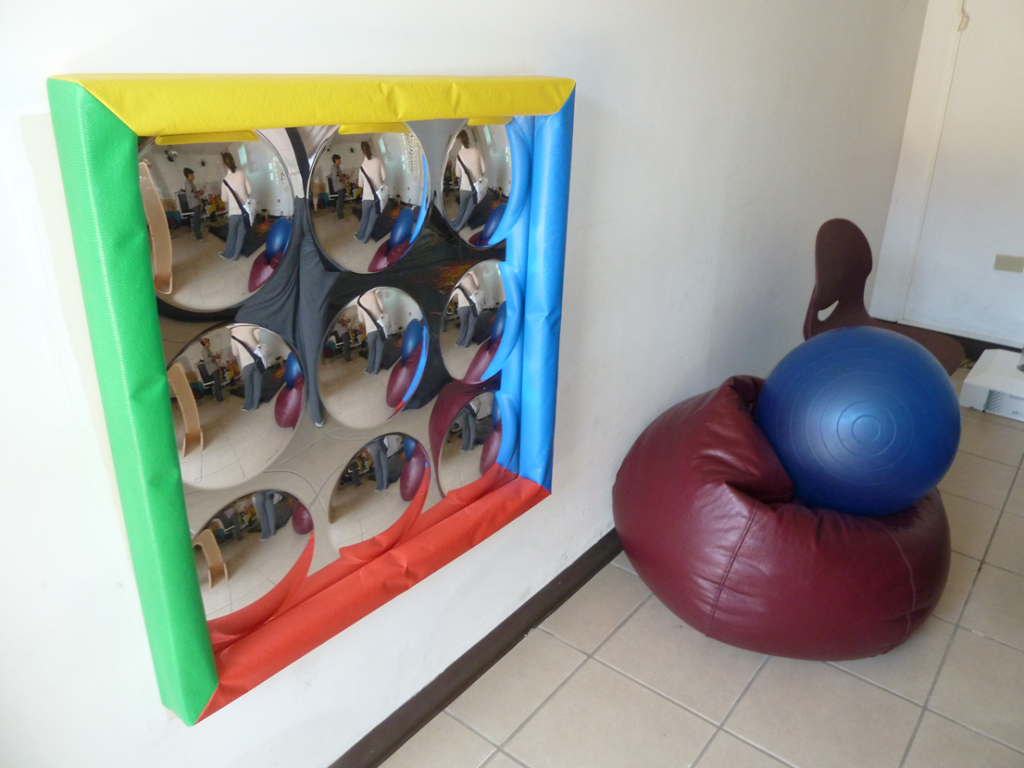
Traditional Multisensory Environments uses mirrors, lights, and objects with different tactile feedback.
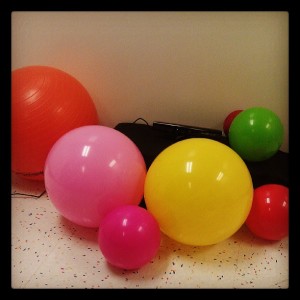
Various sizes and colors of balls used in SensoryPaint.
SensoryPaint is an interactive surface with the capability of superimposing the user’s reflection on a projected surface and “painting” this surface with balls of different textures and colors, which was designed to augment traditional therapies. This software uses a Kinect to detect the movements of the user and the balls. The user’s image is reflected on the screen, as well as their shadow superimposed on their reflection. SensoryPaint is a software originally developed at CICESE in Ensenada, Mexico.
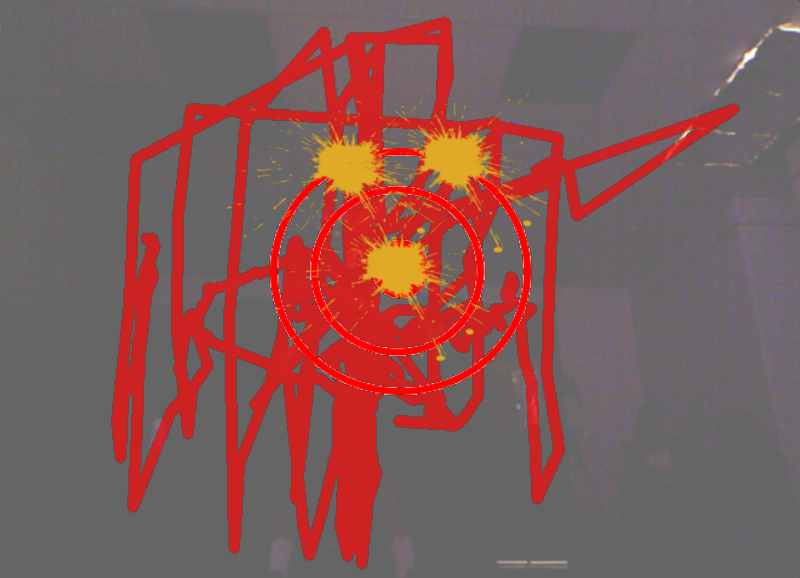
Mode with painting and splashes.
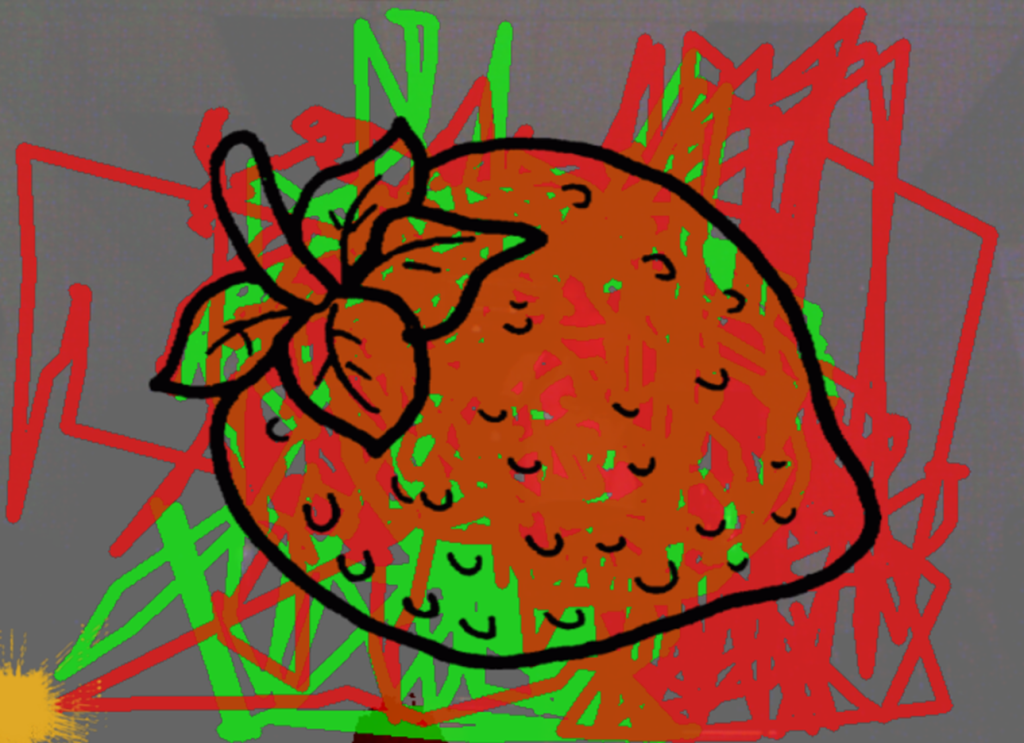
Coloring Book Mode with the user using two different colors to fill in the strawberry shape.
Initial studies of the SensoryPaint system are focused on uncovering the potential of this technology to support sensory integration, including stimulus sensitivity, body awareness, motor functioning, and attention and engagement.

